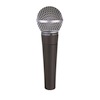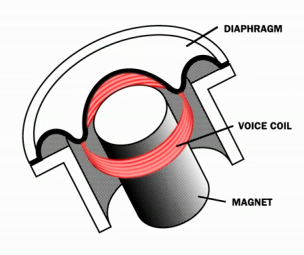IS THE SHURE SM58 OLD TECHNOLOGY?
Posted on Wed 12 June 2013 in entries
 The Shure SM58 was first released in 1966, based on technology developed in the 30s (and pioneered by Shure) for the original Unidyne capsule. Today, the design remains much the same, so does this mean that the Shure SM58 is constructed using outdated technology? Are other manufacturers using more modern designs and hence creating better quality microphones? In this article we will highlight the facts and dispel any myths about what is still the world's most popular live performance microphone...
The Shure SM58 was first released in 1966, based on technology developed in the 30s (and pioneered by Shure) for the original Unidyne capsule. Today, the design remains much the same, so does this mean that the Shure SM58 is constructed using outdated technology? Are other manufacturers using more modern designs and hence creating better quality microphones? In this article we will highlight the facts and dispel any myths about what is still the world's most popular live performance microphone...
http://www.youtube.com/watch?v=Ht_ZTIhtpCY
As we've already mentioned, the Shure SM58 is based on technology developed in the 1930s, but this doesn't mean that it's outdated. In fact, all unidirectional dynamic microphones on the market today are based on this same technology.
Dynamic microphones, as the name suggests, make use of a moving part in their design. Dynamic microphones are constructed using a diaphragm with a coil attached to it and suspended in a magnetic gap. As sound 'hits' the diaphragm, the sound pressure causes it to move, which in turn makes the coil move up and down in the magnetic field and induce a voltage, which is then interpreted as a sound. Every dynamic microphone is built using this design.
Shure have been responsible for a number of developments that have helped build and improve on this basic design. With the original Unidyne, they introduced small ports, which allowed sound to strike the rear of the diaphragm, allowing production of a unidirectional cardioid microphone from a single element. This was a revelation at the time.
So, how did the Shure SM58 improve on this design when it was released in 1966? The main new innovation was that of a pneumatic shockmount, which was incorporated into the build of the microphone. The design of dynamic microphones and their reliance on movement to create sound naturally poses some obvious problems. By handling the microphone during a performance, you risk causing the diaphragm to move and when the diaphragm moves, the microphone will create sound. If you put the microphone on a stand to prevent this, any vibrations travelling up the stand are likely to be carried through to the microphone itself and onto the diaphragm... and if the diaphragm is vibrating, you're going to get sound!
Shure's pneumatic shockmount system significantly reduces the risk of the diaphragm moving in such instances, making it a highly reliable option for performers. Despite first appearing in the 1960s, this shockmount design was extremely sophisticated and it lives on in all of today's SM58s. What's more is that it has not been successfully duplicated by any competitor microphone manufacturer, which goes some way to explain why the SM58 is still a firm favourite in the modern music industry.
Although the SM58 has of course moved with material science developments, plus manufacture and testing improvements, it is still firmly rooted in the designs of the 1930s and 1960s. So, is the Shure SM58 old technology? Yes, it certainly is! But just because it's old doesn't mean that it's sub-standard. If you're going to accuse the SM58 of being outdated then you may as well also start complaining that playing an acoustic guitar made out of wood is a medieval way of working! The fact that this design is still being used today simply means that the original concepts were so strong. As we mentioned, every other unidirectional dynamic microphone out there today is built on exactly the same basic principles, but not every one can boast the title of the world's most popular dynamic microphone...
Information for this article was taken from Shure UK's own web blog. Click here to view it.
For more information on the Shure SM58 or any of our bundles, click the links below or give us a call on 01202 597180.
Shure SM58S (Switched) - More Info/Buy
